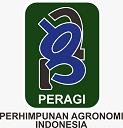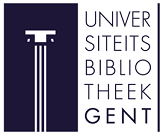The Effect of Livelihood Capital on the Sustainable Livelihood of Rice Farmers in Penanggungan Village, Mojokerto Regency, East Java, Indonesia
Abstract
Sustainable livelihoods are a crucial concept in efforts to achieve balanced social, economic, and environmental prosperity. In reality, many communities face challenges with their implementation, including uncertain income and limited access to existing resources. The existence of these problems necessitates effective strategies for achieving sustainable livelihoods. This research aims to analyze sustainable livelihood strategies by optimizing the livelihood capital owned by rice farmers. This research was conducted in Penanggungan Village, Trawas District, Mojokerto Regency. This research was conducted in February – March 2024. This research focused on farmers who grow rice plants, with 134 respondents. The method used is a sustainable livelihood approach based on livelihood capital. Data analysis used logistic regression. The results obtained from human capital, social capital, and physical capital have a significant and positive impact on sustainable livelihoods. Meanwhile, natural capital has no significant effect, and financial capital has a negative and insignificant impact on sustainable livelihoods. Thus, human capital, social capital, and physical capital have the opportunity to improve farmers’ sustainable livelihoods.
Keywords
Full Text:
PDFReferences
Anggraeni, S. N., Firmansyah, C., Rivianda Daud, A., & Kuswaryan, S. (2020). The Influence of Socio-Economic Factors on the Poverty Status of Sheep Farmer Households in Rural Areas Pengaruh Faktor Sosial Ekonomi terhadap Status Kemiskinan Rumah Tangga Peternak Domba di Perdesaan. Jurnal Sosial Bisnis Peternakan, 2(2), 51–61. http://jurnal.unpad.ac.id/jsbp
Bank, W. (2019). Aspiring Indonesia—Expanding the Middle Class. Aspiring Indonesia—Expanding the Middle Class. https://doi.org/10.1596/33237
Begho, T., & Odeniyi, K. (2024). Indonesian Farmers’ Subjective Well-being: Determinants and Effect on Discounting Behaviour. Millennial Asia, 1–21. https://doi.org/10.1177/09763996231222568
Fabry, A., & Maertens, M. (2025). Temporary labor mobility to various geographical and sectoral destinations improves rural incomes − Insights from Peru. World Development, 185(September 2024), 106782. https://doi.org/10.1016/j.worlddev.2024.106782
FAO. (2009). The Livelihood Assessment Tool-kit: analysing and responding to the impact of disasters on the livelihoods of people. In The effects of brief mindfulness intervention on acute pain experience: An examination of individual difference.
Garba, tukur. (2023). Research Methodology : A Quantitative Approach Research Methodology : A Quantitative Approach. August.
Girlani, A., Ngonta, M., & Ar, N. H. (2024). Factors Influencing the Implementation of Soil and Water Conservation in Carrot Farming in East Java , Indonesia. Agrobali, 7(3), 719–730. https://doi.org/https://doi.org/10.37637/ab.v7i3.1802
Hidayah, I., & Susanti, N. (2022). Peran Sektor Pertanian dalam Perekonomian Negara Maju dan Negara Berkembang : Sebuah Kajian Literatur. Jurnal Salingka Nagari, 1(1), 28–37.
Jiménez, D. A., Smith, N. M., & Holley, E. A. (2022). Capitals in artisanal and small-scale mining in Marmato, Colombia: Using the sustainable livelihoods framework to inform formalization. Extractive Industries and Society, 12(May). https://doi.org/10.1016/j.exis.2022.101157
Joy, M., Bon, L., Villaralbo, N. B., Beltran, D. R., Baltar, K. C., Arkhel, T., Palma, D., & Onsay, E. A. (2025). Development and Sustainability in Economics and Finance Factors influencing agricultural insurance acceptance among rice farmers in the poorest Region of Luzon , Philippines : A multinomial model analysis. Development and Sustainability in Economics and Finance, 6(January), 100044. https://doi.org/10.1016/j.dsef.2025.100044
Kuang, F., Jin, J., He, R., Wan, X., & Ning, J. (2019). Influence of livelihood capital on adaptation strategies: Evidence from rural households in Wushen Banner, China. Land Use Policy, 89(September), 104228. https://doi.org/10.1016/j.landusepol.2019.104228
Lei, X., Shen, Y., & Yang, L. (2023). Digital financial inclusion and subjective well-being – Evidence from China health and retirement longitudinal study. China Economic Review, 81(July), 102013. https://doi.org/10.1016/j.chieco.2023.102013
Ma, L., Zhang, Y., Li, T., Zhao, S., & Yi, J. (2024). Livelihood capitals and livelihood resilience: Understanding the linkages in China’s government-led poverty alleviation resettlement. Habitat International, 147(February). https://doi.org/10.1016/j.habitatint.2024.103057
Maas, L. T., Sirojuzilam, Erlina, & Badaruddin. (2015). The Effect of Social Capital on Governance and Sustainable Livelihood of Coastal City Community Medan. Procedia - Social and Behavioral Sciences, 211(September), 718–722. https://doi.org/10.1016/j.sbspro.2015.11.092
Orsango, R., Rajan, D. S., Senapathy, M., & Bojago, E. (2023). An analysis of rural farmers’ livelihood sustainability in Offa district, Southern Ethiopia. Journal of Agriculture and Food Research, 12(May), 100610. https://doi.org/10.1016/j.jafr.2023.100610
Oru, E. (2022). The relationship between tendency of rural population to work in non-agricultural jobs and some socio-economic factors ( example of Tokat Kazova great plain conservation area ). 92(November 2021), 50–55. https://doi.org/10.1016/j.jrurstud.2022.03.008
Panudju, A. T., Purba, F., Nurbaiti, S., Kesehatan, P., Semarang, K., & Kalalinggi, S. Y. (2024). Metodologi penelitian (Issue February).
Rocchi, L., Menegaldo, G., Paolotti, L., & Boggia, A. (2025). Assessment of circularity in the agri-food sector : Adapting the material circularity index to the olive oil production. Journal of Cleaner Production, 496(January), 145112. https://doi.org/10.1016/j.jclepro.2025.145112
Rozi, F., Subagio, H., Adi, D., Elisabeth, A., Mufidah, L., Saeri, M., Burhansyah, R., Carolina, J., Krisdiana, R., Hanif, Z., Dwi, E., & Lisaria, R. (2025). Indonesian foodstuffs in facing global food crisis : Economic aspects of soybean farming. Journal of Agriculture and Food Research, 19(October 2024), 101669. https://doi.org/10.1016/j.jafr.2025.101669
Sanusi, M. M., & Dries, L. (2024). Weather-related shocks, livelihood assets and coping strategies of water-insecure smallholder rice farmers: A case study from Ogun State, Nigeria. Environmental Development, 51, 101040.
https://doi.org/10.1016/j.envdev.2024.101040
Serrat, O. (2017). The Sustainable Livelihoods Approach. Knowledge Solutions, November, 21–26. https://doi.org/10.1007/978-981-10-0983-9_5
Sugiyono, S. (2010). Metode Penelitian Kuantitatif, Kualitatif dan R&D. Alfabeta.
Suryandari, A., & Rahayuningsih, E. S. (2020). Strategi Bertahan Hidup Ekonomi Rumah Tangga Petani Padi Aspek Pendapatan, Konsumsi, dan Tabungan Studi Kasus di Desa Tonjung Kecamatan Burneh Kabupaten Bangkalan. Pamator Journal, 13(2), 176–182. https://doi.org/10.21107/pamator.v13i2.8525
Syawie, M. (2012). Ketahanan Pangan Dan Kesejahteraan Petani. Sosio Informa, 17(3), 158–164. https://doi.org/10.33007/inf.v17i3.85
Talema, A. H., & Nigusie, W. B. (2023). Impacts of urban expansion on the livelihoods of local farming communities: The case of Burayu town, Ethiopia. Heliyon, 9(3), e14061.
https://doi.org/10.1016/j.heliyon.2023.e14061
Umoru, E., Korankye, W., & Olalekan, L. (2024). Development and Sustainability in Economics and Finance Mapping the knowledge domain of natural capital and sustainability : A bibliometric analysis using the Scopus database for future research direction. Development and Sustainability in Economics and Finance, 5(November 2024), 100035. https://doi.org/10.1016/j.dsef.2024.100035
Refbacks
- There are currently no refbacks.


























